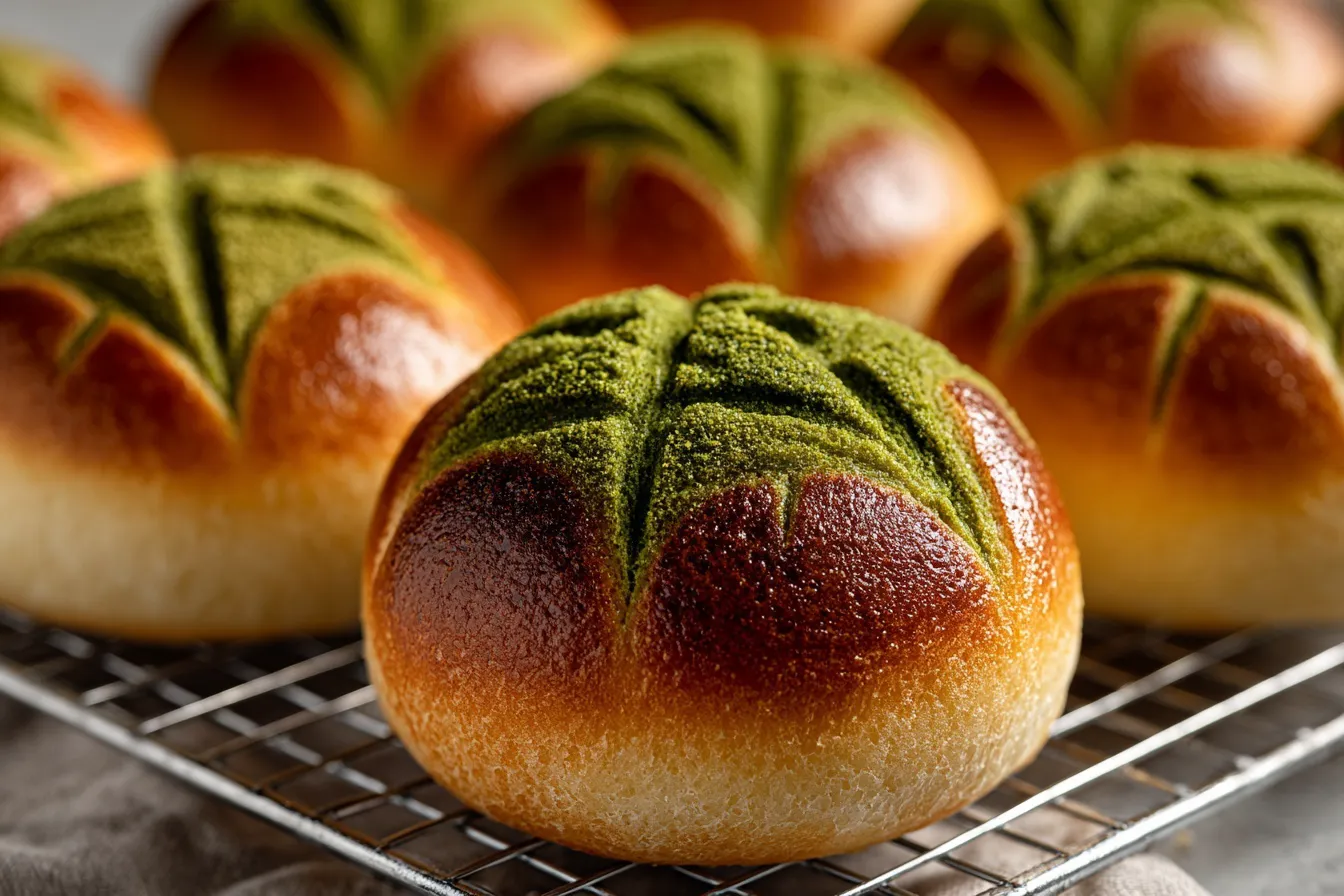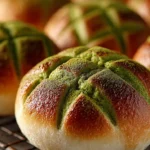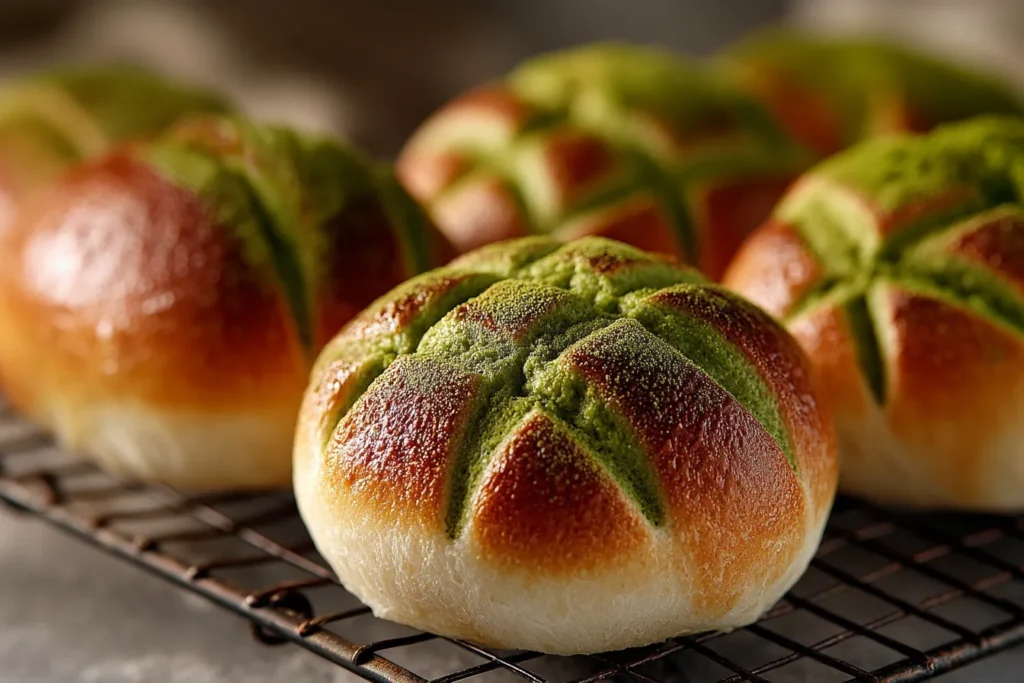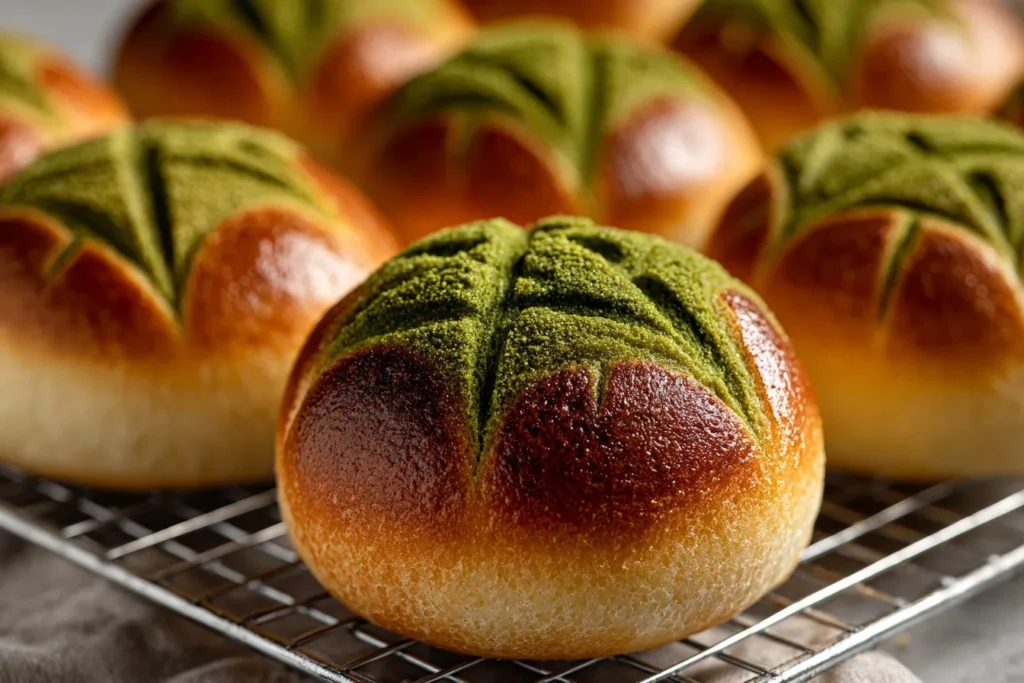There’s something truly special about the moment you pull a loaf of Japanese Sweet Bread out of the oven — that golden, cloud-like crust giving way to the softest, most pillowy crumb you’ve ever seen. The aroma fills every corner of the kitchen, wrapping you in warmth and nostalgia. It’s the kind of bread that doesn’t just feed the body; it soothes the heart.
My love affair with Japanese Sweet Bread began a few winters ago when Sophie came home from school carrying a small, perfectly shaped loaf her friend’s mother had made. The texture was unlike anything I’d ever tasted — tender, buttery, and delicately sweet, with a richness that lingered. She called it “milk bread,” and from that day on, I was determined to recreate it in my own kitchen.
Table of Contents
The Story Behind My Japanese Sweet Bread
A Recipe Born from Comfort and Curiosity
When I first learned about Japanese Sweet Bread, or Hokkaido Milk Bread as it’s often known, I was fascinated by its secret — the tangzhong method. It’s a simple flour-and-water roux that locks in moisture, giving the bread that signature soft, stretchy texture. As a home baker, I’d made countless loaves over the years — from hearty sourdoughs to rustic French boules — but nothing quite compared to this. It was gentler, almost tender-hearted, like the kind of bread you’d make to remind someone that they’re loved.
I spent weeks testing recipes, measuring, kneading, and sometimes failing. But every batch brought me closer to that perfect balance of sweetness and fluff. When I finally got it right — a loaf so soft it could be torn apart with a whisper — I felt the same quiet joy my grandmother used to feel when her bread rose perfectly in the old cast-iron oven back home.
Why It’s Become a Family Favorite
Now, Japanese Sweet Bread is a staple in our kitchen. Michael loves it toasted with butter and strawberry jam before school, and Sophie uses it for her favorite fruit sandwiches — a Japanese-style treat she proudly calls “sando.” For me, it’s the kind of bread that brings everyone together around the table. It’s simple, humble, yet impossibly luxurious in its texture.
Every time I make it, I think of how food connects us — across cultures, memories, and generations. This bread might be Japanese in origin, but in my Portland kitchen, it’s become part of our family story. And once you’ve baked it, I promise it’ll become part of yours too.

Perfecting the Japanese Sweet Bread Dough
Making Japanese Sweet Bread is a lesson in patience, warmth, and the gentle art of baking with intention. Unlike ordinary bread, this dough is silky, supple, and just a touch sweet — a balance achieved through precision and care. The secret lies in its tangzhong, a traditional Japanese technique that gives the loaf its signature softness and delicate chew. Once you learn this method, you’ll find it transforms every bread you bake.
The Tangzhong Method: The Secret to Softness
What Makes Tangzhong So Special
At its core, the tangzhong method is simple — but it’s what elevates Japanese Sweet Bread above any other loaf. You start by cooking a small portion of the flour with milk (or water) into a thick paste before adding it to your dough. This process pre-gelatinizes the starches, which allows the dough to absorb more liquid. The result? Bread that stays incredibly soft, moist, and fresh for days.
To make the tangzhong, whisk together 3 tablespoons of bread flour with ½ cup of milk in a small saucepan. Heat it gently over medium-low heat, stirring constantly until it thickens to a pudding-like consistency — usually around 150°F. Remove it from the heat and let it cool before using. This step only takes five minutes but makes all the difference.
Building the Perfect Dough
Once your tangzhong has cooled, it’s time to bring the rest of the dough together. In a large mixing bowl, combine 2 ½ cups of bread flour, 3 tablespoons of sugar, 2 teaspoons of instant yeast, 1 teaspoon of salt, and 1 large egg. Add the cooled tangzhong, ¾ cup of warm milk, and 3 tablespoons of softened butter.
Knead the dough until smooth and elastic — about 10 minutes by hand or 6 minutes with a mixer. The dough should be soft but not sticky, pliable enough to stretch into a thin windowpane without tearing. This is the hallmark of perfectly developed gluten, which gives Japanese Sweet Bread its signature stretch and airy crumb.
After kneading, shape the dough into a ball and place it in a lightly greased bowl. Cover it with a damp cloth and let it rise in a warm place until doubled in size, about 1 hour. The slow, steady rise builds flavor and structure, ensuring every bite is as light as a cloud.
Print
Japanese Sweet Bread
- Total Time: 2 hours
- Yield: 1 loaf (12 slices) 1x
- Diet: Vegetarian
Description
This Japanese Sweet Bread, also known as Hokkaido Milk Bread, is the softest, fluffiest bread you’ll ever bake. With a delicate sweetness, buttery aroma, and signature pillow-like texture, it’s perfect for breakfast, sandwiches, or simply enjoying warm from the oven.
Ingredients
- Tangzhong:
- 3 tablespoons bread flour
- 1/2 cup milk
- Dough:
- 2 1/2 cups bread flour
- 3 tablespoons sugar
- 2 teaspoons instant yeast
- 1 teaspoon salt
- 1 large egg
- 3/4 cup warm milk
- 3 tablespoons unsalted butter, softened
- 1 egg + 1 tablespoon milk (for egg wash)
Instructions
- Make the Tangzhong: In a small saucepan, whisk together 3 tablespoons of flour and 1/2 cup milk. Cook over medium-low heat, stirring constantly until thick and smooth (about 150°F). Remove from heat and let cool completely.
- Mix the Dough: In a large mixing bowl, combine bread flour, sugar, yeast, and salt. Add the cooled tangzhong, egg, warm milk, and butter.
- Knead: Mix until a dough forms, then knead for 8–10 minutes (or 6 minutes with a mixer) until soft, elastic, and slightly tacky but not sticky.
- First Rise: Place the dough in a greased bowl, cover with a damp cloth, and let rise in a warm spot for 1 hour or until doubled in size.
- Shape: Gently deflate the dough and divide into 3–4 equal pieces. Shape each piece into a smooth ball, rest for 10 minutes, then roll each into an oval. Fold sides inward, then roll up from the short end to form logs.
- Second Rise: Arrange the rolled dough in a greased 9×5-inch loaf pan. Cover and let rise for 45–60 minutes, or until the dough puffs just above the rim.
- Bake: Brush the top with egg wash. Bake at 350°F (175°C) for 25–30 minutes, until golden brown. If it browns too quickly, cover loosely with foil halfway through.
- Cool & Serve: Remove from pan and let cool on a wire rack for 30 minutes before slicing. Serve warm or toasted with butter and jam.
Notes
Store at room temperature in an airtight container for up to 4 days. To freeze, slice and wrap individually — reheat in the toaster or oven. For extra flavor, add 1 teaspoon of honey or milk powder to the dough.
- Prep Time: 20 minutes
- Cook Time: 30 minutes
- Category: Bread
- Method: Tangzhong + Oven Baking
- Cuisine: Japanese
Nutrition
- Serving Size: 1 slice
- Calories: 180
- Sugar: 5g
- Sodium: 220mg
- Fat: 4g
- Saturated Fat: 2g
- Unsaturated Fat: 2g
- Trans Fat: 0g
- Carbohydrates: 30g
- Fiber: 1g
- Protein: 6g
- Cholesterol: 35mg
Shaping, Baking & Serving Japanese Sweet Bread
After the first rise, the dough for Japanese Sweet Bread becomes a soft, velvety canvas ready to take shape. This is my favorite part — the gentle touch of dough between your hands, the way it yields without resistance. It’s a quiet ritual that slows time down, the kind of moment that reminds you baking isn’t just about ingredients; it’s about care.
Shaping with Intention
Creating the Signature Fluffy Loaf
Once the dough has doubled in size, turn it out onto a lightly floured surface and gently press to release air. Divide it into three or four equal portions. Shape each into smooth balls by tucking the edges underneath — like cradling something fragile. Cover and let them rest for about 10 minutes so the gluten relaxes, making it easier to roll out later.
Using a rolling pin, flatten one piece into an oval shape about 6 inches long. Fold one long edge toward the center, then the other, overlapping slightly. Roll it up from the short end, forming a tight cylinder. Repeat with the remaining pieces. Place the rolled dough side by side in a greased 9×5-inch loaf pan. This method gives Japanese Sweet Bread its classic layered appearance once baked.
Cover the pan and let it rise again for 45–60 minutes, or until the dough puffs up beautifully and reaches just above the rim of the pan. Brush the top with an egg wash made from one egg and a splash of milk for that glossy golden finish.

Baking to Golden Perfection
Preheat your oven to 350°F (175°C). Bake the bread for 25–30 minutes until the top turns deep golden brown and sounds hollow when tapped. If it browns too quickly, cover loosely with foil halfway through.
When the loaf is done, remove it from the pan and let it cool on a wire rack. Don’t rush this step — as tempting as it is to tear into it right away, cooling helps the interior set and keeps the crumb soft.
Here’s a simple summary for quick reference:
Table: Japanese Sweet Bread Quick Baking Guide
| Step | Action | Time/Temp | Tip |
|---|---|---|---|
| Make Tangzhong | Cook flour + milk until thick | 5 min | Cool before mixing |
| First Rise | Let dough double in size | 1 hr | Cover with damp towel |
| Shape | Divide and roll into 3–4 logs | 10 min rest + shaping | Keep dough soft |
| Second Rise | Proof in loaf pan | 45–60 min | Should rise above rim |
| Bake | Oven 350°F (175°C) | 25–30 min | Cover if browning early |
| Cool | On rack before slicing | 30 min | Keeps crumb tender |
The first slice is always the best — tender, buttery, slightly sweet, and impossibly soft. Serve it plain, toasted with butter, or turned into delicate sandwiches with jam and cream. Around here, it rarely lasts a full day.
Nutritional Benefits, FAQs & Conclusion
There’s a quiet kind of joy that comes from baking Japanese Sweet Bread — the warmth of the oven, the soft hum of patience, and that first slice that seems to melt on your tongue. Beyond its irresistible flavor and texture, this bread is a beautiful reminder that comfort food can also be simple, balanced, and nourishing.
Why Japanese Sweet Bread Feels Like a Hug in Loaf Form
Balanced Ingredients, Wholesome Comfort
While Japanese Sweet Bread feels indulgent, it’s surprisingly wholesome when made at home. The addition of milk, eggs, and a touch of butter gives it a soft richness without being heavy. The tangzhong method locks in moisture, meaning you don’t need extra fats or sugars to achieve that perfect tenderness.
Each serving provides a balanced combination of carbohydrates for energy, protein for structure, and healthy fats for flavor and satisfaction. The bread stays fresh longer than most, making it ideal for families who love fresh-baked bread but can’t always bake daily.
Here’s a quick nutritional snapshot:
| Nutrient | Amount (per slice) | Benefit |
|---|---|---|
| Calories | 180 kcal | Energy for your morning or snack |
| Protein | 6g | Supports muscle and tissue repair |
| Fat | 4g | Adds richness and satiety |
| Carbohydrates | 30g | Provides steady energy |
| Sugar | 5g | Light sweetness without overload |
| Calcium | 8% DV | Strengthens bones and teeth |
A Bread That Connects Generations
Every time I bake this bread, I think of my grandmother’s hands — steady, patient, never rushing the dough. She didn’t know the tangzhong method, but she understood the language of warmth. I see that same spirit in Sophie, kneading the dough beside me, laughing as flour dusts her hair. Japanese Sweet Bread isn’t just food — it’s memory and connection, a bridge between cultures and time.
FAQs about Japanese Sweet Bread
1. What makes Japanese Sweet Bread so soft?
The secret is the tangzhong method, a cooked flour and milk paste that helps the dough retain moisture and elasticity, resulting in that famously fluffy texture.
2. How is Japanese Sweet Bread different from regular white bread?
It’s softer, slightly sweeter, and stays fresh longer due to the higher hydration from the tangzhong. It’s also richer because of the milk, butter, and eggs.
3. Can I make Japanese Sweet Bread without a mixer?
Yes! While kneading by hand takes about 10–12 minutes, it’s absolutely doable. Focus on stretching and folding until the dough becomes smooth and elastic.
4. How should I store Japanese Sweet Bread to keep it fresh?
Once cooled, store it in an airtight container or wrap in plastic at room temperature for up to 4 days. You can also freeze slices and reheat them in the toaster.

Conclusion
When I pull a loaf of Japanese Sweet Bread from the oven, the golden crust and sweet aroma instantly take me home. It’s the kind of bread that turns ordinary mornings into small celebrations — something you share, tear apart, and remember.
Richard used to say that bread was “a hug you can taste,” and I think he was right. Baking this bread feels like sharing a piece of my heart — with my children, my memories, and now with you. Whether you make it once or it becomes a weekly ritual, this bread promises the same thing every time: warmth, softness, and love in every slice.
👉 I hope you enjoyed baking this soft, pillowy Japanese Sweet Bread—it’s subtly sweet, perfectly fluffy, and ideal for breakfast, tea time, or anytime you’re craving comfort in a bite.
Looking for more warm and cozy baking ideas? Try our Homemade Angel Biscuits—they’re buttery, tender, and just as delightful with jam or honey. You might also love our Sweet Sourdough Bread with Blueberries for a tangy-sweet twist on classic bread.
For more international and fluffy flavors, check out these Cottage Cheese Blueberry Muffins—a protein-rich and tender option perfect for tea time. And if you’re on a baking spree, these Bakery-Style Cranberry Scones are a must-try next.
Want to share your favorite healthy creations or ask questions about natural swaps? Visit our Contact Page—we’d love to hear from you and keep the conversation going!


